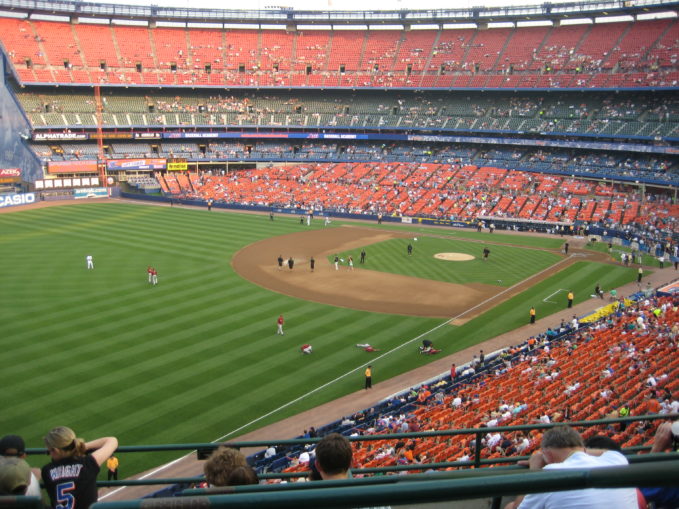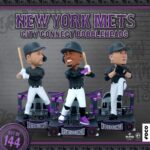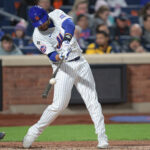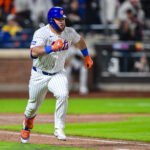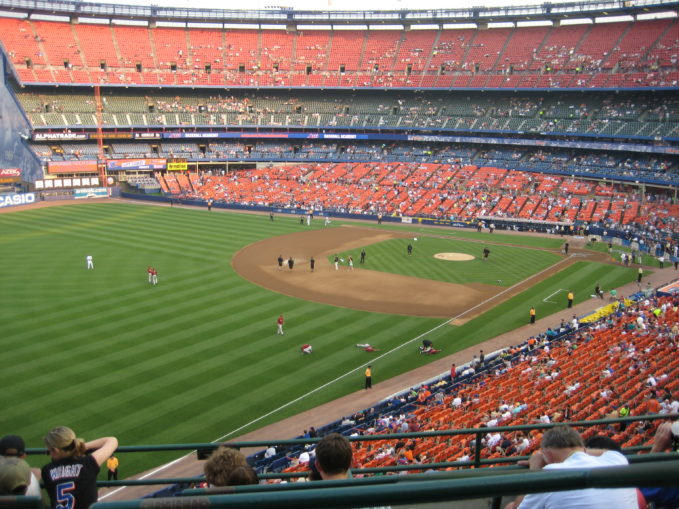
On March 24, 1961, the New York State Senate approved $55 million of funding to build a new ballpark in Queens which would become the home of the yet-to-be-named National League expansion club. The New York Metropolitans, later shortened to “The Mets”, began play in 1962.
Their new home, which opened it’s gates in 1964, would be named Shea Stadium after William Shea, who helped broker the deal for National League expansion. We know that the Mets played their first two seasons at the Polo Grounds, the former home of the New York Giants.
The initial plan was for the Mets to play at Yankee Stadium until their ballpark was ready. The Yankees denied the Mets permission to play in the Bronx in 1961. Many say the reason was retribution for the Mets’ hiring of former Yankees general manager, George Weiss.
In addition to also being the Jets’ home through the 1983 football season, Shea Stadium was home for the Yankees in 1974 and 1975 while Yankee Stadium was being renovated. Further, it hosted the Giants in 1975, making it home for all four teams during that year.
The Mets called Shea Stadium home from 1964 through 2008. There were many great moments at the concrete horseshoe in Flushing. While we will all have our opinions, here are my top five memories from the place many Mets fans referred to as “a dump, but our dump”.
5. Mets Win 1973 NLCS, October 10, 1973
The Mets’ improbable run from last place on August 31 would culminate with an NLCS series victory over the heavily-favored Cincinnati Reds. Tom Seaver pitched New York to victory, and their second pennant in four years. Seaver was not at his best (five walks) in Game Five, but was good enough to support a rare offensive outburst, tossing 8 1/3 innings to lead the Mets to a 7-2 win.
This series featured the Bud Harrelson/Pete Rose brawl in Game Three, and a home run in extra innings by Rose to give the Reds a Game Four win and force a decisive fifth game. The fans stormed the field when the game-ending ground out was completed, and the Mets were off to their second World Series.
4. Mike Piazza‘s Home Run, September 21, 2001
After the 9/11 terrorist attacks on New York City and Washington DC, baseball paused for a week. The Mets resumed play in Pittsburgh, and returned home on September 21 for the first sporting event in New York since that fateful day.
There was an uneasiness around the stadium, with heavy police presence and a palpable nervousness among the fans.
The game seemed incidental to the symbolism of it being played as a sign of moving forward. The Braves, as they often were in that era, were ahead of the Mets in the bottom of the eighth inning. The Mets were, to use a 2019 term, a fringe playoff team and needed every win they could get. Piazza stepped to the plate, and provided a moment of joy and a touch of healing for the crowd, and perhaps by extension, New York City. The goosebumps never go away.
3. Mets Win 1986 World Series, October 27, 1986
The Mets completed something that for six months seemed inevitable, and for three weeks seemed improbable when they beat the Boston Red Sox for their second championship. The team had dominated the regular season, but ran into trouble in both postseason series, surviving more than winning.
They were on the brink a couple of times, and even trailed in the middle innings of Game Seven of the World Series, but found a way to prevail.
I recall the feelings when Jesse Orosco threw his glove in the air. They were partially jubilation, and partially relief. The thought of “imagine, if after the season they had, they lost” quickly popped in my head. They came so close to losing, that having the “what if” moments persisted into the off season. But when all was said and done, the Mets were world champions, and it happened on their home turf.
2. Mets Win 1969 World Series, October 16, 1969
This one comes in ahead of 1986 because it legitimized the franchise. The Mets had been lovable losers from 1962-1968, though in 1968 the potential for a dominant pitching staff was taking shape. The Mets won the championship in just their eighth season, and shocked the world in doing so. They used a combination of pitching, timely hitting, and some good fortune to bring the trophy to Queens.
The Mets became the more popular team in New York, and fan interest skyrocketed through the early 1970s. When Cleon Jones took the knee in left field after catching Davey Johnson‘s fly ball, the Mets had arrived. They were no longer a joke; they were the talk of the sports world. Heck, they even got to go on The Ed Sullivan Show.
1. It Gets By Buckner, October 25, 1986
In my opinion, there was no single moment at Shea Stadium more thrilling than this one. We all know the context. The Mets were supposed to steamroll the Astros (they didn’t) and sweep the Red Sox (at least in our minds). Not only did the Mets not sweep the Red Sox, they were down to their last out, down two runs, with no one on base. The win probability had to be less than one percent.
Somehow, the Mets found a way. Gary Carter, Kevin Mitchell, and Ray Knight put together good at-bats and all singled. The season rested on Mookie Wilson‘s shoulders. The man prone to the strikeout found a way to put the ball in play. Whether Mookie’s speed intimidated Buckner or a cosmic force was at work, I’ve never felt or heard Shea Stadium as raucous as it was in this moment.
The feelings of euphoria and relief permeated the October night. Even Mets fans who go around anticipating the worst (I’m among them) felt there was no way they would lose Game Seven after that. They almost did, but the “Buckner Ball” had magic in it that survived a rainout the next night, and a tough final game of the series two nights later.
Thank you, New York State Senate, for approving funding for Shea Stadium sixty years ago today.


